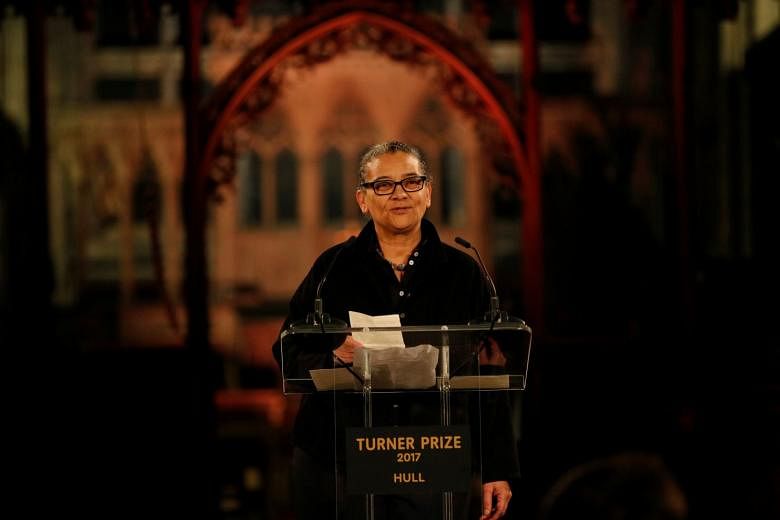LONDON • When you win a Turner Prize, the world stops to listen to what you wish for.
"Now, if I say I want something, people try and do it for me and that's never happened to me in my life," said Lubaina Himid.
Last year, 30 years into her exhibiting career, she won the Turner Prize, Britain's pre-eminent award for contemporary art. As the first black woman to take the prize and, at 63, the oldest recipient, she brought more press attention to the event than it had received in years.
This spring, Himid has four shows opening around Europe, starting with a retrospective at the MRAC museum for contemporary art in Serignan, France.
Others will take place in Glasgow, Berlin and Gateshead in England. All were scheduled before the prize was announced.
Himid is now using her clout to ask the galleries to include black artists living and working nearby in talks and debates that run with the exhibitions.
If curators say there are no black artists working in their region, as Himid said they often do, she provides names from a network built up over many years.
She wants to bring black audiences to galleries and local artists of colour to the attention of curators.
The requests she now makes are part of a mission to make black histories available through archival research and encourage arts institutions to value the work of women and people of colour.
Her personal archive laid the foundation for Making Histories Visible, a research project based at the University of Central Lancashire exploring the contribution of black visual art to the cultural landscape.
Whether painted on canvas, newspaper, dinnerware or wooden panels of a piano, Himid's work has an immediate, gripping appeal.
Beyond her paintings' alluring colours and graphic qualities lie troubling questions: about the attitudes towards black creativity; about stereotyping of minorities even in liberal media; about British wealth from Caribbean sugar.
And they set the scene for conversations about what art is shown by the world's taste-making institutions and what art is overlooked.
Himid has long championed the work of other artists. A leading figure in the British Black Art Movement of the 1980s, she organised important group exhibitions at public institutions in London.
The exhibition at Serignan will present works from eight series she has made since the 1980s.
All are talking points connected to Europe's colonial past and wealth derived from slavery.
Cotton.com, a series of 85 painting from 2002, recalls an incident from the 1860s when mill workers in Britain refused to process cotton grown in the Confederate states.
The patterned panels imagine coded communication between black slaves on American plantations and British textile workers.
As part of her participation in the forthcoming Berlin Biennale, Himid asked the organisers to translate into German texts by African-American poet and activist Essex Hemphill, and by Maud Sulter, a British artist and writer of Ghanaian and Scottish heritage.
In Serignan, a region where more than half the voters chose far-right leader Marine Le Pen from the National Front in the second round of last year's French presidential elections, the gallery will host, at Himid's request, a conversation between Ms Francoise Verges, an academic known for her work on the legacy of colonialism and slavery, and French-Cameroonian curator Christine Eyene.
"It will be hard-hitting," Himid said, sketching the outcome she hopes for.
NYTIMES

